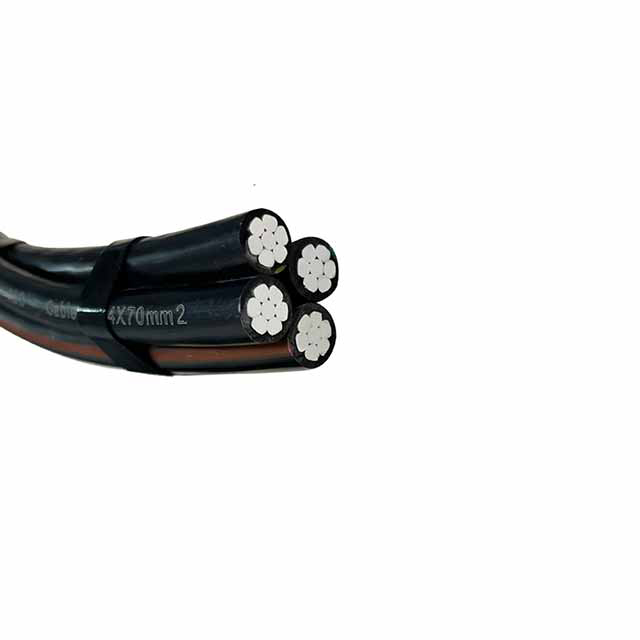Whether you are working on a home or business, you must know the ABC (Aluminum, Copper, and Semiconductive) cable. Despite its name, ABC cable has a long list of benefits. Among them, it is safer to install, requires less labor, and reduces the risk of tampering or theft of electricity. But before purchasing ABC cable, you must be sure of the manufacturer’s standard and quality certification. Moreover, you should also check the factory certificate of conformity.
Low Voltage Aerial Bundled Cable
The Low Voltage Aerial Bundled (or ABC) cable is a telecommunications cable that works well over overhead power lines or at the entrance to a room. This cable is usually made of copper and aluminum and has a low operating, installation, and maintenance cost. Its specifications are defined in EN 50483-4. To learn more, read the following article. This article will discuss the basics of aerial bundled cables and how they are made.
Low Voltage Aerial Bundled (LVAB) cables have aluminium or copper cores. Aluminum is lighter and less expensive and its applications are largely limited to distribution networks. LVAB is also a safe choice for outdoor installations, as it requires less tree pruning and support parts. Low Voltage Aerial Bundled Cable meets international standards and is suitable for use in densely populated and urban areas.
LVAB is commonly used for outdoor and street lighting and other electrical applications. It is also designed for use in temporary service during construction. Its nominal voltage (Uo/U) is 6/10 kV with a frequency of 50Hz. The cable is suitable for indoor and outdoor installation, as well as in cable ducts and cable trays. It is available in a variety of sizes and colors.
Aerial bundled cables, also known as aerial cable, are a type of telecommunications cable. The two types of aerial cable are identical in terms of construction, but one has more insulating material. XLPE is a more environmentally friendly material than PVC. XLPE is also resistant to high temperatures and is moisture-resistant. Besides the benefits, visual inspection of low voltage cables can catch potential problems before they become big ones. In addition to visual inspection, visual checks can also detect corrosion on copper or insulating material and wires.

The ABC cable is a type of electrical distribution cable with three cores and a metal sheath. Its nominal voltage Uo/U varies from six to ten kV and its frequency is 50 Hz. It is suitable for installation in cable ducts, cable trays, and power supply stations. The three cores of the cable are protected from oxidation, corrosion, and heat. Moreover, this type of cable is less susceptible to grounding accidents and inter-phase short circuits.
ABC cable is often used in industrial settings where the environment is poor. A chemical plant, for example, can lead to grounding faults due to metal dust floating in the wind. The abc cable helps prevent such situations and prevents short-circuiting of medium voltage cables. Aerial bundled cable has excellent insulation properties, which makes it a suitable choice for aerial installations. For this reason, it is widely used in cable and aerial installations.
Historically, OH distribution methods were the only viable option for the distribution of electricity, but this practice has become a major concern in the Australian power systems. Some areas are prone to bushfires and older ABC installations can also cause them. Due to this issue, the Dandenong Ranges in Victoria are replacing medium voltage ABC cables with underground versions. This cable has a life expectancy of around 10 years and is safer than the OH ones.
ABC cables are generally used in low-voltage applications. They can handle voltages up to one kV and have a wide temperature range. Low-voltage ABC cables can withstand temperatures down to -20 degrees Celsius. They also meet the requirements for insulation class II according to IEC 61140. Aerial bundled cables are especially useful in low-voltage applications and are often used for overhead power lines. In addition, they are also used for room entrances.
A Semiconductive layer in an ABC cable is a layered structure that helps the cable conduct electricity. It is not actually a semiconductor in the traditional sense of the word, but rather an insulator that has been intentionally degraded so that a small amount of conductivity is produced. High-voltage cables are often supplied with an overall shield layer, which keeps the entire electric field contained within the jacket. This prevents corona and partial discharges.
Low-voltage ABC has several benefits. It is cheaper to manufacture, less brittle, and requires less maintenance. Additionally, it is more aesthetically pleasing than bare copper wire. In addition, it requires fewer crossbars and is easier to erect. In short, it is a more efficient and reliable cable for electrical utilities. This article will give you some tips on how to make the most of the Semiconductive layer in an ABC cable.
An outer protective sheath (also known as the natural jacket) covers the copper conductor. It is made of MDPE with a minimum point thickness of 100 mils and a maximum point thickness of 148 mils. The semiconductive layer is then placed over the insulation. Its thickness is usually about one-tenth that of the outer jacket. This insulator is what helps the cable resist sunlight. The jacket itself can be either black or white.
The material used for the semiconductive layer is generally a polymeric composition. Depending on the type of polymer, the material can be cross-linked, branched, linear, or non-cross-linked. Further, the material may be a low-density polyethylene or ethylene vinyl acetate, or a thermoset (cross-linked) polymer. When it comes to the insulating material, the polymer itself can be either thermoplastic or non-thermoplastic.

